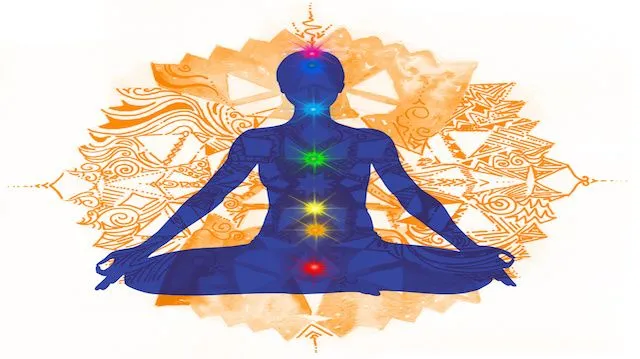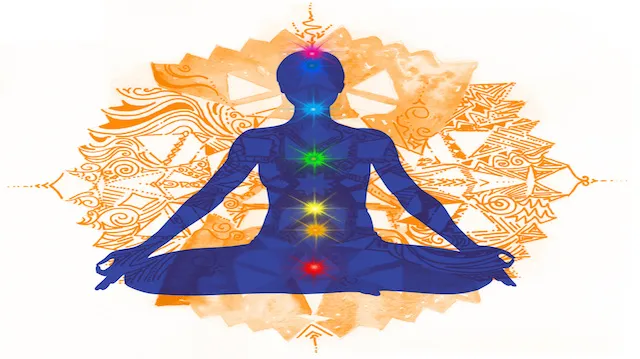
- Share on Facebook93
- Share on Pinterest
- Share on Twitter
If you feel like you never have enough energy, making an effort to tone out distractions and tune into your body may be the first step to feeling better.
Balancing your chakras is an excellent way to find balance within your body and mind. While chakra meditation may seem too “out there” for many people, it can be beneficial and easy to practice in a modern context. This ancient practice is now getting support from modern science, with evidence showing that energy healing may help fight cancer.
Here is a quick intro to chakras, a number of benefits of a chakra-related practice, plus how to fit it into daily life.
What are chakras?
The chakra system is an ancient way of viewing the body. It is divided into seven zones, with each area having energy that must flow freely. When the chakras are balanced, the whole body works in harmony and we feel elevated, energized and whole.
If the concept of “energy” feels too new-agey for you, just think of the seven points along the body as different organ systems. All of your organs must be in good working order for the body and mind to be healthy.
An introduction to the seven chakras
So what are these seven zones of energy, or function, within the body? Here is a quick rundown of each chakra.
Root chakra
Color: Red
Element: Earth
Location: Base of the spine, tailbone
Related Body Functions: Elimination of waste and toxins, core balance, pelvic floor
Purpose: Feeling of being grounded, safe and secure.
Sacral or pelvic chakra
Color: Orange
Element: Water
Location: Two inches below the belly button in the lower abdomen
Related Body Functions: Lower digestion and absorption, immune system, sexual organs
Purpose: Feeling pleasurable, accepting, creative and abundant
Solar plexus chakra
Color: Yellow
Element: Fire
Location: Around the point where the ribs meet in the middle of your abdomen
Related Body Functions: Upper digestion, stomach, diaphragm
Purpose: Feeling confident and in control, self-worth
Heart chakra
Color: Green
Element: Air
Location: Center of the chest, on the breast bone
Related Body Functions: Breathing, cardiovascular function
Purpose: Feeling loved and giving love, inner peace
Throat chakra
Color: Blue
Element: Ether or space
Location: In the throat in the Adam’s apple area
Related Body Functions: Taste, swallowing, speaking, jaw tightness
Purpose: Being able to communicate and express, both inwardly and outwardly
Third eye chakra
Color: Indigo (blue-violet)
Element: Light
Location: In the forehead, between the eyes
Related Body Functions: Sight, decision-making, perception
Purpose: Feeling able to understand life situations and perceive meaning
Crown chakra
Color: Violet
Element: Cosmic energy
Location: On top of or just above the head
Related Body Functions: Mental peace and connectedness
Purpose: Feeling beautiful, connected and purposeful
Benefits of balancing the chakras
Now that you know the basics about each of the seven chakras, how can you use them for holistic health?
The benefits of chakra balancing are closely tied with the philosophy of yoga. If you have taken a yoga class or practiced on your own, you will know the feeling of full-body integration that comes after completing a session. Yoga experts will explain that this is due to the movement of life energy, also called prana or chi, that comes from practicing yoga.
 It is believed that blocked energy in a particular chakra or chakras can lead to illness in those areas of the body. Taking the time to shift this energy using yoga and/or chakra meditation can help clear these issues. This is something you can do consciously so that you can take control of your state of well-being.
It is believed that blocked energy in a particular chakra or chakras can lead to illness in those areas of the body. Taking the time to shift this energy using yoga and/or chakra meditation can help clear these issues. This is something you can do consciously so that you can take control of your state of well-being.
Simple practices to help balance your chakras
There are many ways you might integrate a chakra balancing into your regular self-care routine. This is a basic summary, although you may wish to do more research into particular techniques.
Meditation: Visualize glowing spheres corresponding to the color of the chakras, starting with the root chakra and moving up. Tune into each part of the body as you move through the chakras and feel any sensations you might notice there.
Acupuncture: If you visit an acupuncturist, they may stimulate points corresponding to the chakras to help stimulate or open underactive chakras and bring them into balance with each other.
Yoga: Specific poses work in conjunction with different chakras. For example, tree pose helps you to feel grounded, corresponding with the root chakra. Camel pose helps to open your heart chakra to the sky. You may wish to use yoga as an active yet meditative way to stimulate and balance your chakras.
Meditation is scientifically proven to support overall health and may even slow brain aging! Basing your practice around chakras is a great way to stay mindful, tuned in and connected to your body.
Check out some health-boosting morning drinks to sip in accompaniment with your meditation practice.
—The Alternative Daily
Sources:
http://www.sciencedirect.com/science/article/pii/016747818990105X
http://www.sciencedirect.com/science/article/pii/S0304394099007703
http://www.yogajournal.com/article/chakras-yoga-for-beginners/beginners-guide-chakras
http://www.modernchakra.com/chakra-science.html
http://www.fitday.com/fitness-articles/fitness/exercises/what-is-chakra-yoga.html#b
http://eocinstitute.org/meditation/third-eye-chakra-opening
http://www.care2.com/greenliving/chakra-101-a-beginners-guide.html
- Share on Facebook93
- Share on Pinterest
- Share on Twitter

